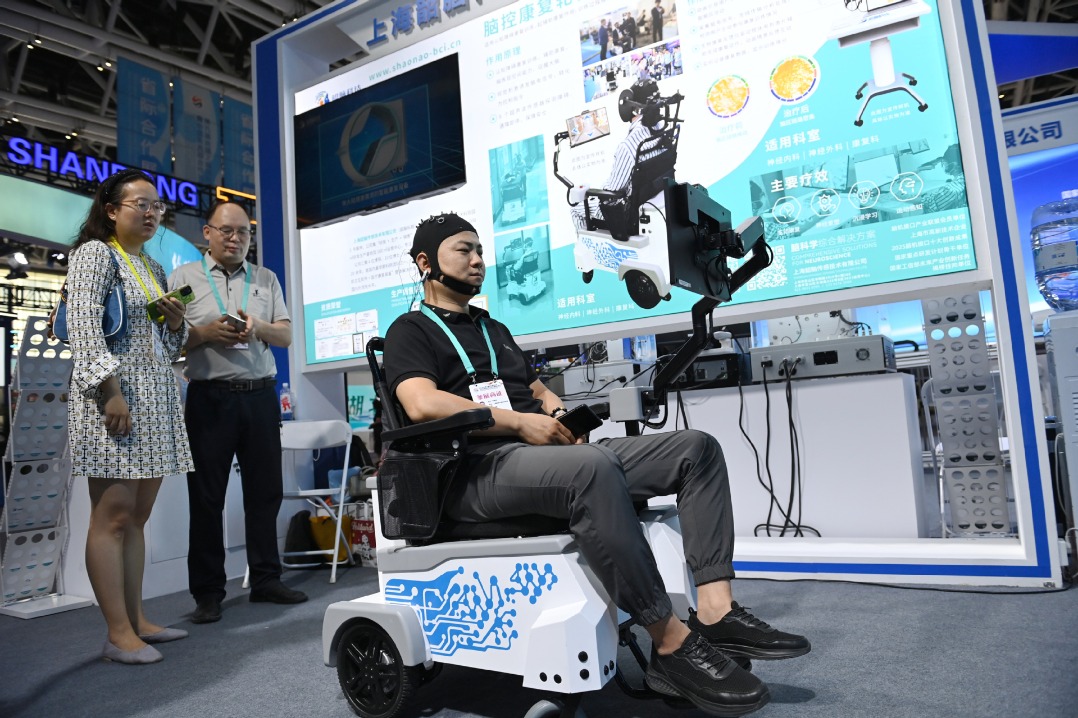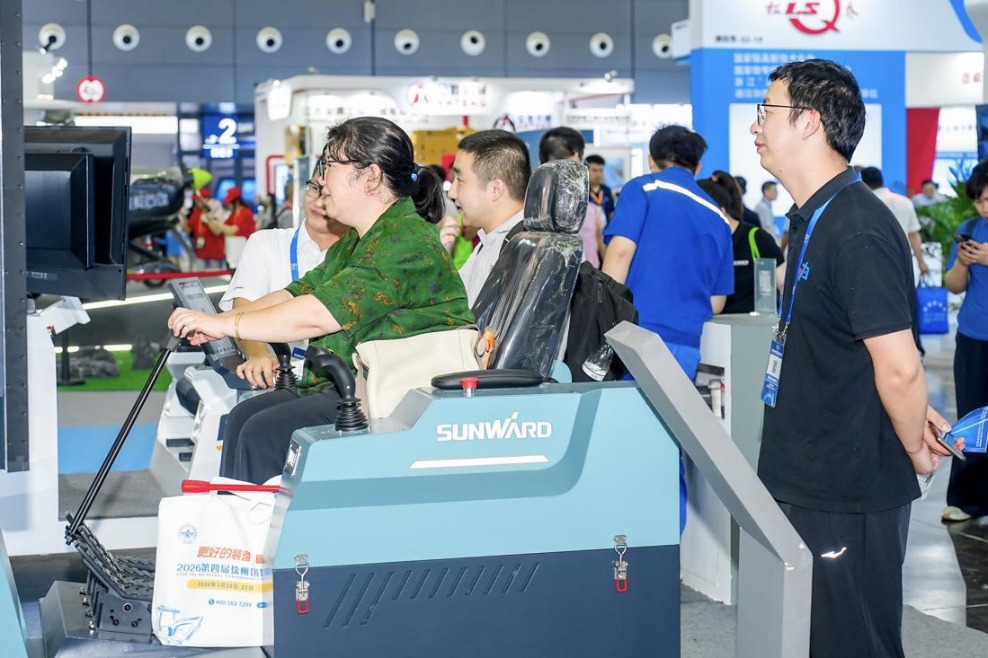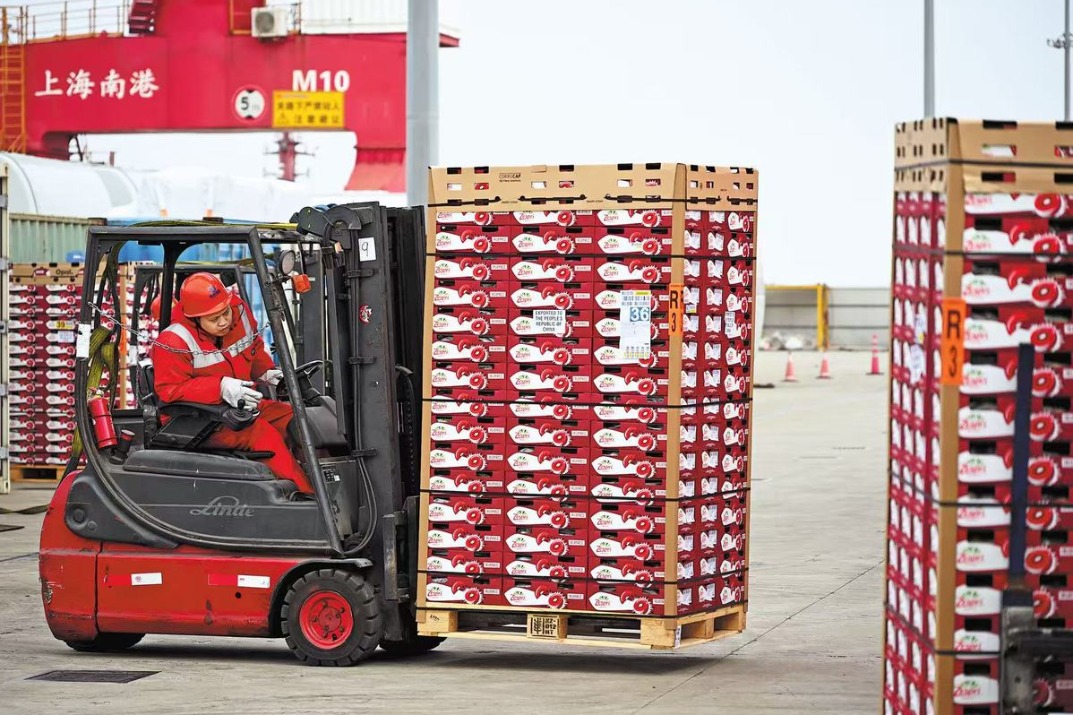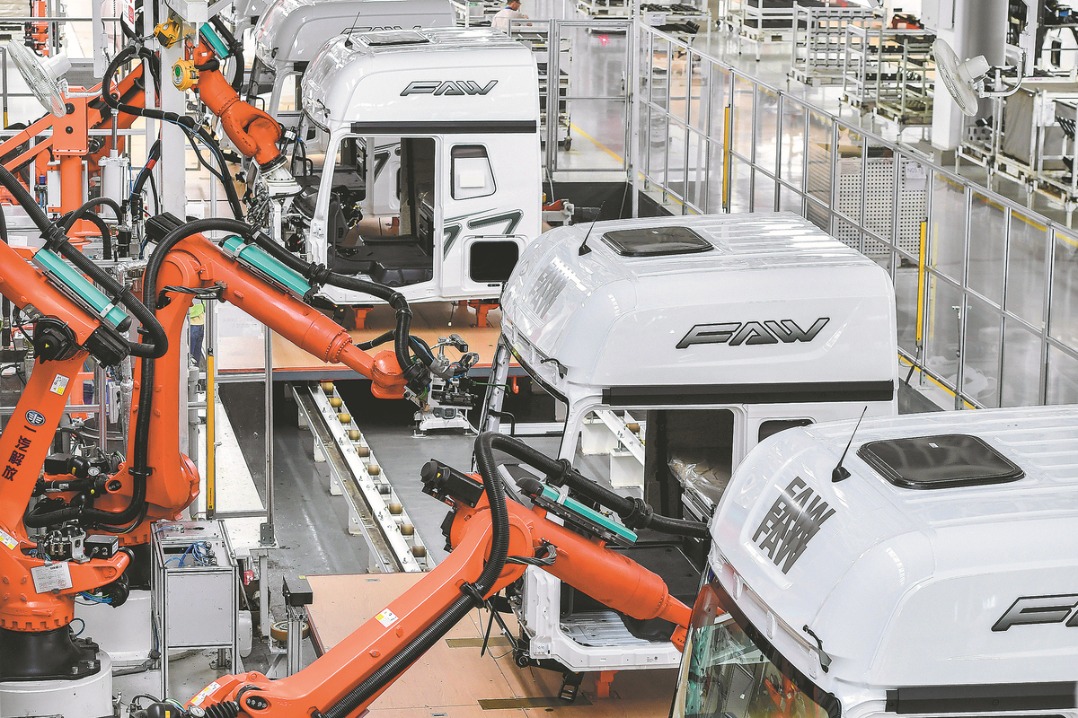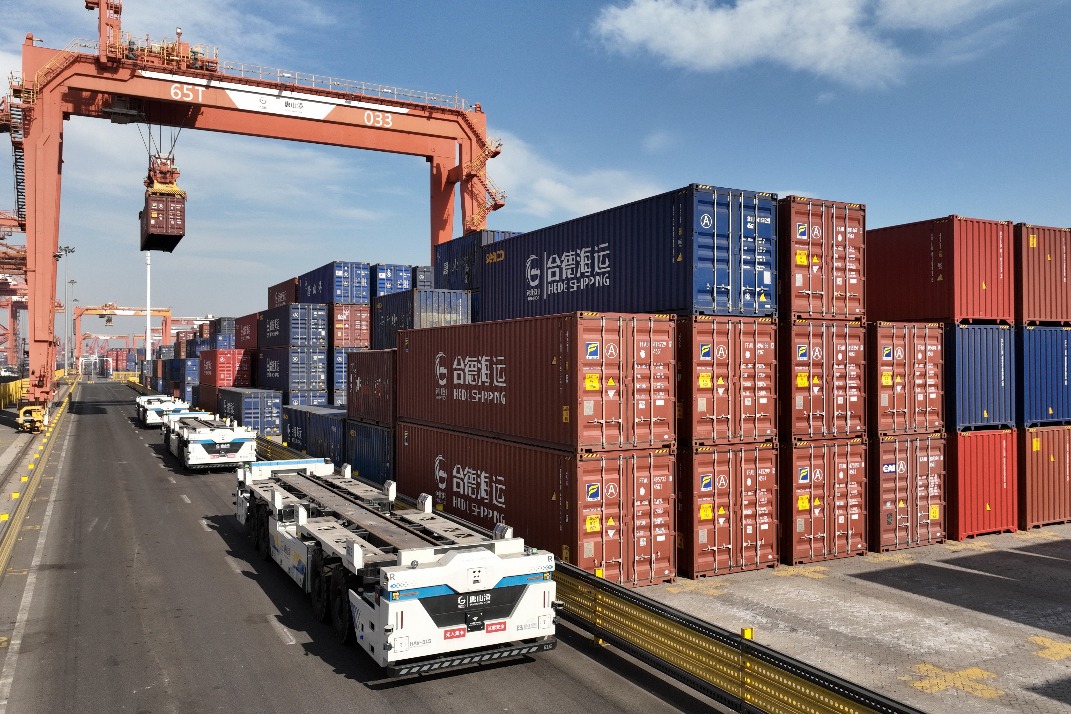High-end ships transforming maritime biz

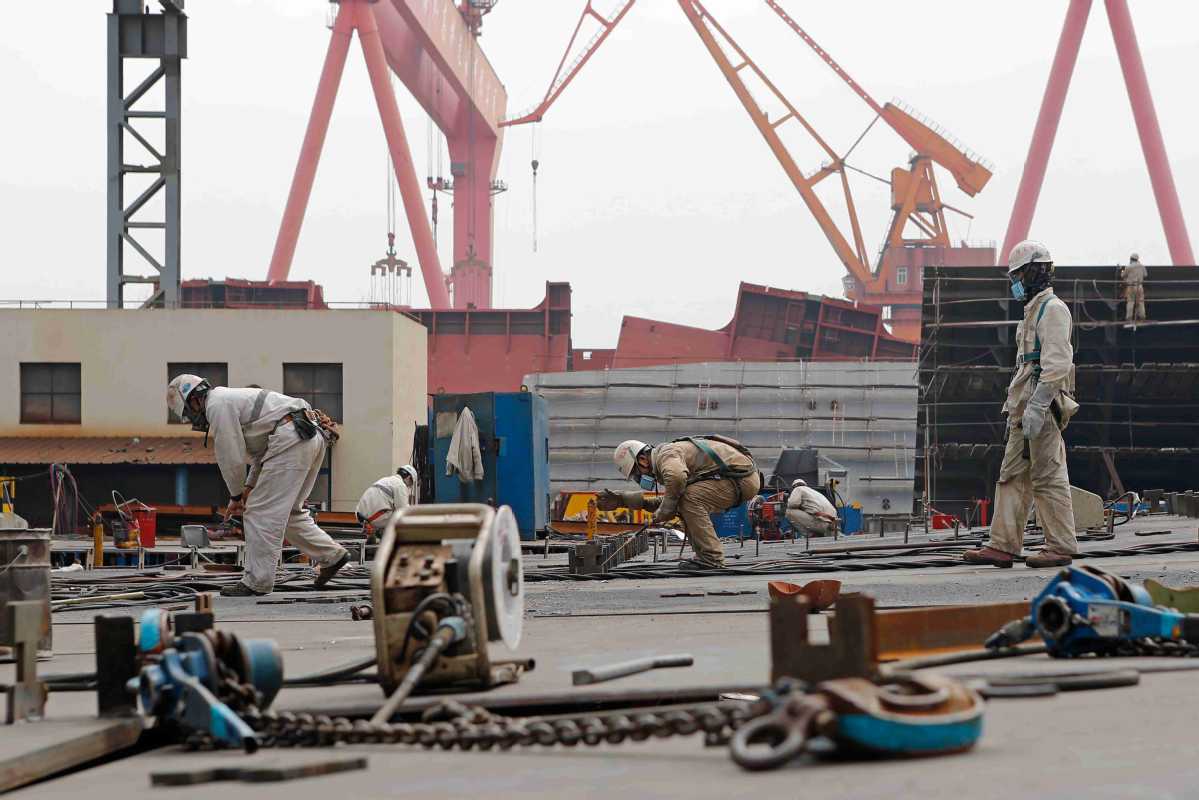
Still, officials said the shipyard's construction of Haixun 160, an advanced ship that is responsible for maintaining navigation marks in near harbors in the East China Sea, has shown that the efforts made in digitalization are worthwhile. Jiangnan did not use a single piece of paper during the design and construction of the 3D-designed ship, which went into service in 2019.
According to United Kingdom-based Clarkson Research, Chinese shipbuilders won the contracts for all 17 newly ordered vessels of pure car and truck carrier — or PCTC — vessels globally in January, representing a total of 510,000 deadweight tons and 152,000 parking spaces.
Deadweight tonnage is the measure of the weight of everything that a ship is expected to carry. It is the entire weight minus the weight of the ship itself.
The world's largest shipbuilder, China State Shipbuilding Corp, alone won nearly half of the orders of those PCTC carriers, which is seen as another breakthrough in the global shipbuilding industry.
CSSC has made great progress in the PCTC carrier field, winning 35 orders since 2021, accounting for 27 percent of the global total, officials said.
One key element behind CSSC's market expansion is the Shanghai Merchant Ship Design &Research Institute, also known as SDARI.
The reason the company managed to win a large portion of PCTC carrier orders, given fierce global competition, is the outstanding capabilities of the Chinese shipbuilding industry in R&D, design and manufacturing, said Zhang Minjian, chief designer for PCTC with the design and research institute.
SDARI's accumulation of technology, excellent R&D and design and insight into the market have enhanced Chinese shipbuilders' overall international competitiveness, Zhang said.
The demand for PCTC carriers has soared with the rapid worldwide growth of the automotive trade that began last year. The growth in the carriers is projected to reach about 200 vessels between 2024 and 2030, compared with the 12 orders placed between 2016 and 2021 globally, industry officials said.
To tap that growth, SDARI has been working closely with related parties to find the best answers to the crunch for PCTC carrier owners around the world, Zhang said. That has included designing and launching a series of vessel designs that incorporate high technology as well as supporting the establishment of global centers for the R&D, design and construction of PCTC carriers in China, Zhang added.
China maintained its top position in global shipbuilding by accounting for 49.8 percent of new ship orders by compensated gross tonnage in 2022, according to the Ministry of Industry and Information Technology. Compensated gross tonnage is an indication of the amount of work needed to build a given ship.
As China advances as a true shipbuilding power, more efforts are needed in innovation, including design, production and craftsmanship, said Lin Guolong, director of Shanghai Maritime University's Logistics Research Center.
"The global shipbuilding industry is building larger, more intelligent and specialized vessels that consume less energy and emit less pollution, and this is the direction in which Chinese shipbuilders need to go," Lin said.
















